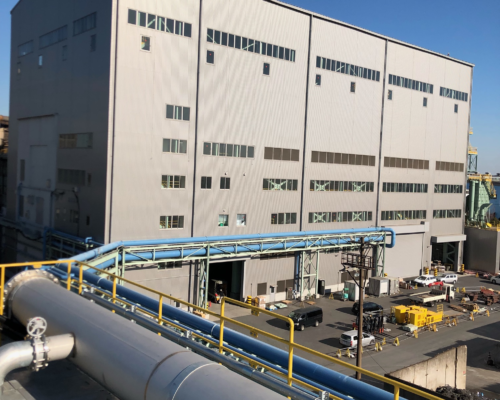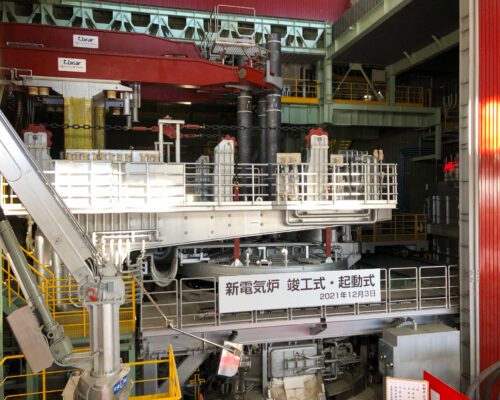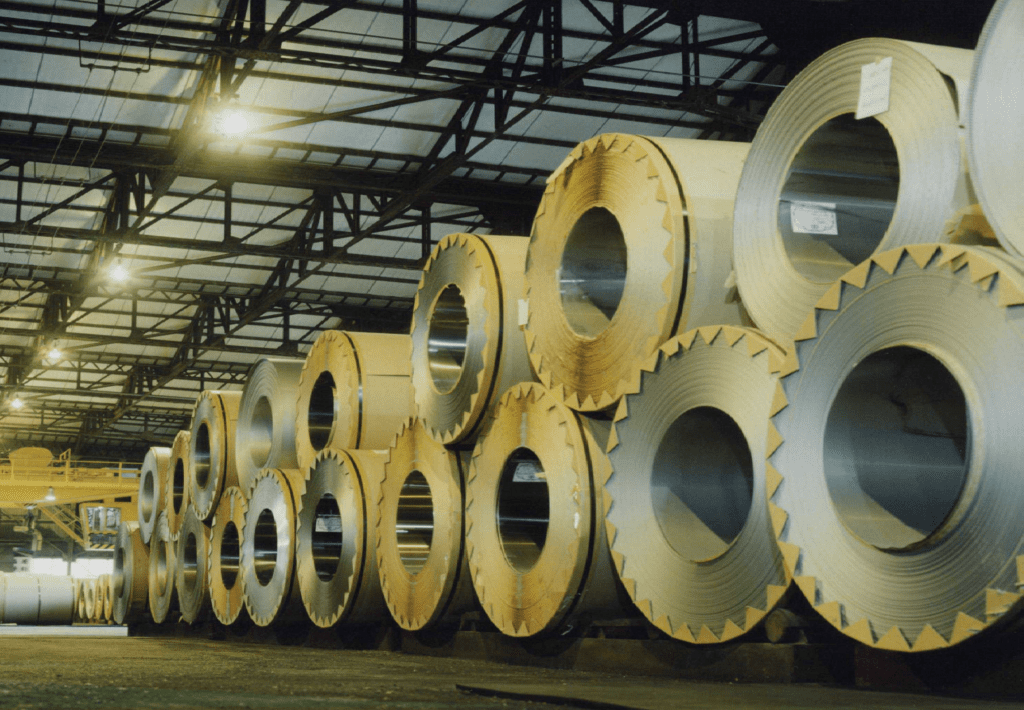Nippon Yakin has been providing the industry with stainless steel since 1935, currently pursuing its goal to be a top global supplier of high-performance materials, producing stainless steel, and high-performance alloys. The company has been strategically organizing efforts to grow, specifically strengthening its quality, cost, and delivery. Utilizing both standard grade stainless steel, and high performance alloys, Nippon Yakin will continue to take initiative in its businesses, measure its performance, and highlight its ESG message.
By Sara Mathov and Kiyo Ichikawa
Background and History
Founded in 1925, Nippon Yakin is a Japanese manufacturer of stainless steel and high-performance materials, with a long history in the industry. After first producing stainless steel in 1935, the company established a stainless steel mass production system through the introduction of equipment and technology. Later, the company also started working on high-performance materials in response to increasing competition from other stainless steel manufacturers.
As a measure to expand sales in the field of high-performance materials, Nippon Yakin has developed new alloys, expanded its product range, and has also implemented innovations in its manufacturing processes.
The company established Nippon Yakin America, followed by Nippon Yakin Shanghai, Nippon Yakin Europe, and Nippon Yakin Asia, to build a global sales network with domestic branches. This network is being used to expand sales of high-performance materials.
Furthermore, the company continues to invest in equipment to enhance competitiveness for both stainless steel and high-performance alloys, most recently with the introduction of a new electric furnace in 2021. Currently, Nippon Yakin manufactures and supplies strips and plates in a wide range of materials, from general-purpose stainless steels, such as 304 and 316, to high-performance materials, such as super stainless steels and Ni (Nickel) alloys. In particular, the company sells more than 10,000 tonnes of Ni alloy flat products annually, and in recent years has maintained its position as one of the world’s top three producers.

Company Philosophy
Nippon Yakin is continuing to challenge the field of high performance alloys. With a strong foundation in the standard-grade stainless steel producing technology and practices, the company is well positioned to cultivate based on its traditional work, and evolve every day.
The company is pursuing its goal to be a top global supplier of high-performance alloys, as well as a reliable manufacturer of stainless steel. Nippon Yakin’s philosophy includes bringing enriched quality of life through superior products, being an independent and efficient creator of products, and maintaining well-being within its community.
Nippon Yakin’s vision is as follows: “To be a continually trusted global supplier, with industry-best quality, delivery, and responsiveness.”
Meeting the Need of the Market
In the stainless steel and specialty steel industry, capital investment in production machinery and other equipment has remained strong. Demand increased due to a recovery in production of electronic components and transport equipment, and increased exports of products for electrical equipment. The price of raw materials and energy has, however, risen, and this has been a factor in the cost increase.
In the field of high-performance materials, demand for equipment for manufacturing solar power generation facilities in China was firm. Demand for semiconductor manufacturing equipment, sheathed heaters, and bimetals was also strong. In response to this external environment, Nippon Yakin made further efforts to improve the productivity of high-performance materials and shorten the lead time. Furthermore, roll margins were secured and costs reduced in line with the increase in raw material prices. As a result, profit of approximately ¥12.8 billion yen was obtained.
Expanding High-Performance Materials
Nippon Yakin has an extensive range of high-performance materials, including corrosion-resistant materials, heat-resistant materials, thermal expansion control materials, high-strength materials, and non-magnetic materials. These materials are used in many fields, making the most of the characteristics of each material by developing demand through solution-based sales and marketing. There are several applications of these materials, proving why it is needed in the market.




Renewable Energy Sector
As the trend towards decarbonization accelerates, renewable energies will continue to be sought after. One example is through photovoltaic power generation, which is one of the most common renewable energy sources, using solar cells to convert light energy directly into electricity. Polycrystalline silicon is a raw material for solar cells. The Siemens process, which is a typical method of producing polycrystalline silicon, includes the reaction of metallic silicon with hydrogen and chlorine at high temperatures (approximately 500°C) and under high pressure. The highly heat resistant Ni alloy UNS N08810 is used in the reaction vessel for this process.
Recently, equipment manufacturers have sought to increase the size of their equipment to improve productivity. However, the corresponding increase in plate thickness has led to disadvantages for equipment manufacturers, because of the cost and workability of the plate material. Therefore, UNS N08120, a highly heat resistant Ni alloy with even better high-temperature properties than UNS N08810, is increasingly used to overcome the disadvantages of cost and workability. Sales of both alloys to China have been strong, with demand expected to remain robust.
Another example of a high-performance material applied for renewable energy is geothermal fluid pipes in geothermal power generation. Geothermal power generation is a method of extracting steam from a two-phase flow (hot water and steam) emanating from deep underground in volcanic regions, and using it to generate electricity. Carbon steel pipes are generally used for general two-phase flows, but in some cases, duplex stainless steel UNS S32506 or super duplex stainless steel UNS S32750 is used for highly corrosive two-phase flows.
In biomass power generation, there are applications of heat-resistant materials in high-temperature environments, and Nippon Yakin will continue to develop demand for this in the future.
“Nippon Yakin Kogyo’s Vision:
Continually trusted global supplier, with industry-best quality, delivery, and responsiveness.”


Oil & Gas
Various high-performance materials are used in oil & gas fields. UNS N08825, a highly corrosion resistant material, is used for pipelines transporting crude oil, pipes protecting hydraulic control cables and sensors, and more, as it is sufficiently resistant to corrosive products.
UNS N06625, which is even more corrosion resistant than UNS N08825, is applied for pipelines and oil refinery plant components used in more severe environments. Additionally, UNS N04400 is used for offshore installations.
Nippon Yakin expects demand to pick up significantly in the future, as major oil & gas projects get underway again.
Hydrogen
Hydrogen, which does not emit CO2 when used, is attracting attention as an energy source for decarbonization, and initiatives for the hydrogen value chain (hydrogen production – transport – storage – use and consumption) are underway.
Hydrogen is classified according to its production method as green hydrogen (produced by water electrolysis using renewable energy), blue hydrogen (produced from fossil fuels and the CO2 produced is stored and reused) and grey hydrogen (produced from fossil fuels and the CO2 produced is emitted as is). Green hydrogen, which does not emit CO2 even during production, contributes significantly to the reduction of carbon emissions. As UNS N02201 will be used for water electrolysis plants, Nippon Yakin has responded to many inquiries, and expect the water electrolysis market to grow in the future.
In addition, in the field of hydrogen utilization and consumption, one of the areas where practical and commercial applications are progressing is in the field related to fuel cell vehicles, where high-performance materials are also being used. Hydrogen stations that supply hydrogen to fuel cell vehicles have highly pressurized hydrogen gas environments, posing a high risk of hydrogen embrittlement. For this reason, a modified type 316L with improved resistance to hydrogen embrittlement is used where normal Type 304 is not applicable.
Currently, this modified type 316L is mainly used in heat exchangers and demand is expected to grow for hydrogen stations for hydrogen vehicles.
Initiatives for ESG and the Future
In response to a strong demand to address ESG issues and carbon neutral initiatives, the Sustainability Strategy Promotion Committee chaired by President Hisashi Kubota was established in August 2021. In December 2021, the first Sustainability Report was published to strengthen external communication. Several advancements have been made by Nippon Yakin towards sustainable practices.
A new state-of-the-art 70-tonne high-efficiency electric furnace, which has been constructed at the Kawasaki Plant with an investment of approximately 13 billion yen, started operation this year. The facility promotes melting efficiency through a variety of functions, which improves productivity, and also demonstrates energy-saving effects. The furnace greatly improves the working environment by improving dust collection, having soundproofing effects, and automating auxiliary tasks.
As part of the expansion of the the cold rolling shop the slitting line will be remodeled and upgraded, scheduled for completion in May 2023, to meet the increasing sophistication of processing accuracy needs.
At the Oheyama Plant, which produces ferronickel as a raw material for stainless steel and Ni alloys, initiatives are being made for carbonless nickel smelting, through measures such as fuel conversion, diversification, and increased use of recycled raw materials.
Furthermore, in January this year, the company decided to introduce a high-efficiency cold-rolling mill, at the Kawasaki Plant, scheduled to start operating in November 2024, and to remodel the existing cold-rolling mill. Following the new electric furnace, this is a pillar of strategic capital investment in the current medium-term management plan, and will further establish a stable supply system and improve the working environment with labor-saving measures.
Nippon Yakin will continue to ensure its business is sustainable, meets the needs of the market, and can be applied to several industries. It has built a trusted reputation for several years and will continue to do so for many more.





